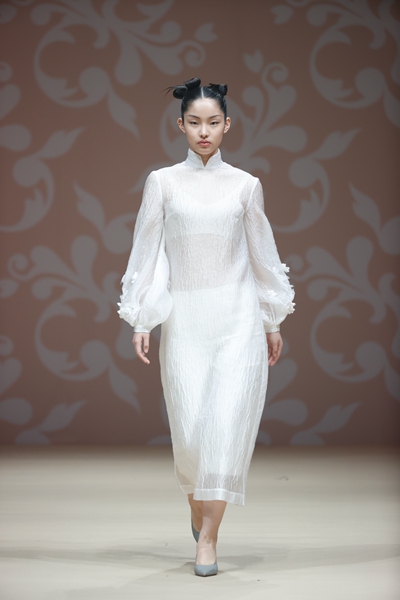

With his deft touch, the softness of silk and the tenacity of wool are delicately combined with touches of warm nude pink and orange. Traditional needlework, called "random stitching", is embellished using modern techniques, such as a fan-shaped pleat and three-dimensional applique. Designs including tassels and puffy sleeves, combined with radium metal-colored fabrics and organza, all add a sense of modernity to the traditional costume.
There's good news for those who may question the accuracy of their weighing scales, too. The collection is not limited to the slim-cut, classic qipao style, but also adopts innovative design elements, including a layered look and irregular silhouettes, meaning the dresses can adorn the larger-framed wearer.
"Don't think of the qipao as a dress simply made with two pieces of fabric," says Sheng.
Sheng explains that even the vertical side split also requires a great deal of effort, including the choice of fabric, hemming, ironing and other processes. He led the team to study traditional techniques employed in making the dress from experienced craftsmen and presented the outcome to consumers.